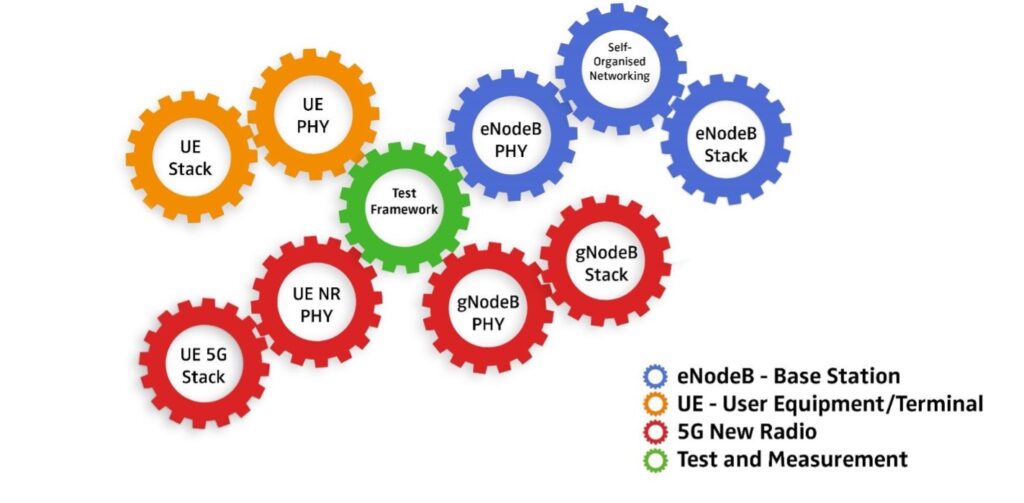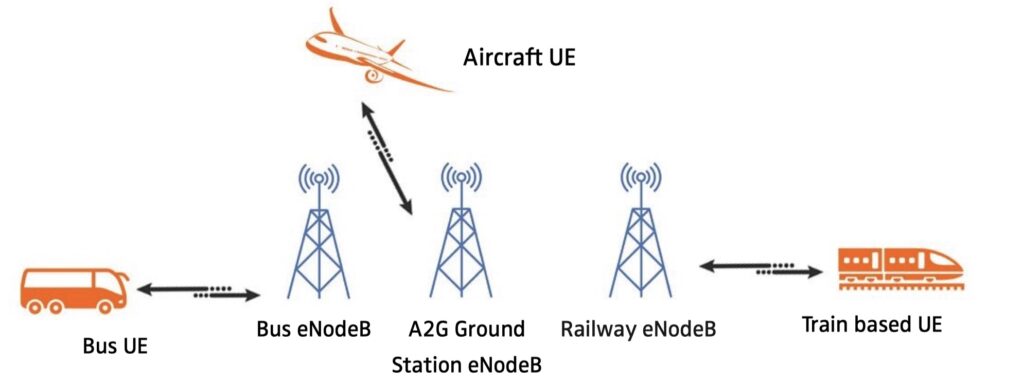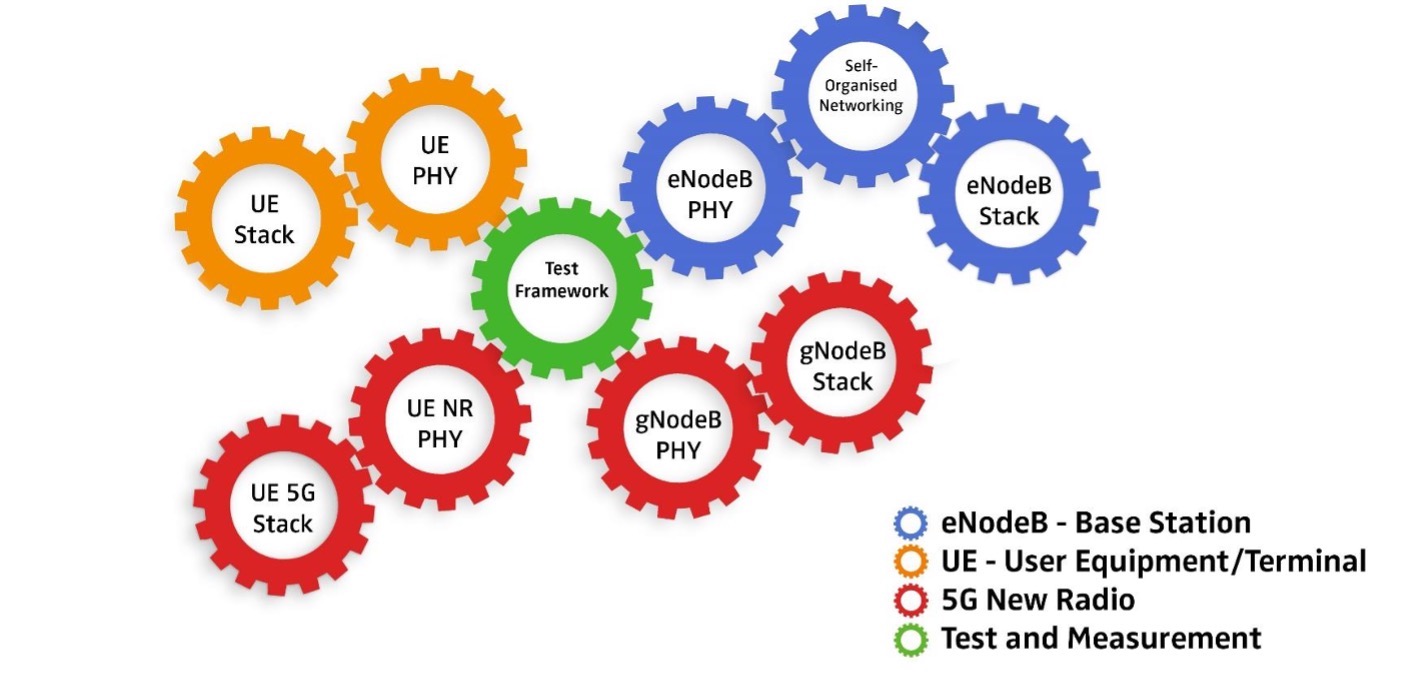By Edward Young, Senior Vice President and General Manager at CommAgility
Today, more and more wireless applications require fast, reliable, secure communications, in a growing range of uses that include satellite communications, aviation, high-speed rail and private networks.
While other technologies such as Wi-Fi are readily available and affordable to install, across many applications the underlying technology and protocols do not provide the necessary capability, speed, reliability and security. To meet these requirements, many designers are looking to long-term evolution (LTE) based networks.
LTE
LTE is a standard for wireless broadband, developed by the 3GPP, which is commonly considered as a 4G technology. It has become the standard of choice for a wide range of specialised networks that were previously built on proprietary networking technologies. These applications typically use their own dedicated, private wireless network, instead of relying on one of the mobile networks provided by an operator that we all use for our smartphones. By using their own private network, connectivity can be provided where the public networks don’t reach, and performance and coverage can be guaranteed. The network can also be customised to provide features or capabilities beyond the LTE standard.
For these private networks, LTE offers spectral efficiency and a well-defined architecture, as well as low latency, fast speeds and high reliability. By basing these networks on well-defined global standards, developers can re-use expertise, technology and protocols from the commercial world.
Looking ahead, 5G is another standards-based option that is becoming increasingly popular for such applications.
Building a private network with LTE involves developing a radio access network (RAN) that wirelessly connects base stations (often called small cells, access points or eNodeB) and a mobile device known as user equipment (UE). The base stations then use LTE ‘core’ software, providing a link to the backhaul network. The software that manages the RAN includes a physical layer (PHY) and a protocol stack; in a standard OSI network model, the PHY is layer 1 (L1), whilst the protocol stack is L2/L3.

Figure 1: LTE/5G radio access network components
LTE benefits
Before network designers can capitalise on the benefits of LTE, they must first address the technical challenges of their system requirements. While LTE provides an excellent basis for a solution, specialised applications normally cannot use the LTE standard without modifications. Private networks often require different performance and capabilities than those provided in the specifications, in areas such as coverage, power, propagation delay and Doppler shift.
For example, in an aviation application where LTE is being used to communicate between an aircraft and a base station on the ground, the system must be able to handle the time delays due to the distances involved. With an altitude over 10,000 metres, these are greater than those supported by the LTE standard. The aircraft’s high speed, typically cruising at over 900km/h, also means the frequency shift of the signals due to the Doppler effect is greater than that specified in the standard, which again requires customisation of the software being used.
In terms of hardware, a typical system will run on a system on chip (SoC), such as Texas Instruments’s Keystone II TCI6630K2L, a low-power baseband solution with an integrated digital radio front end (DRFE). The TCI6630K2L includes two Arm Cortex-A15 RISC cores, and four TMS320C66x DSP cores with fixed- and floating-point processing. This enables it to provide the processing performance needed for LTE applications, whilst keeping power consumption low.
Another example of SoCs for these kind of applications are from NXP: the Layerscape family of SoCs is well-suited for the protocol stack and access to the PHY. For example, the LX2160A multicore processor, the highest-performance member of the Layerscape family, includes sixteen Arm Cortex-A72 cores, as well as multiple features that make it ideal for 5G packet processing applications.
Transport applications
Public transportation has become an increasingly important market for wireless communications. LTE can provide connectivity between the Internet and a moving vehicle, such as aircraft, trains, subways and buses. The data connection can then be shared between passenger Wi-Fi and other services such as fleet management, driver/staff communication and security systems. Being able to offer fast, dependable Wi-Fi to customers is a competitive advantage for transport operators, and can also provide another revenue stream.

Figure 2: LTE uses in transport
Wireless communications will also become vital as we move towards more connected cars, and eventually to fully-autonomous vehicles. For instance, in a pilot project in Germany, called InVerSiv, CommAgility’s eNodeB has provided robust and high-speed delivery of sensor data to a server, and distribution of map data to mobile devices.
As you’d expect, low latency is essential for automotive applications, to maintain safety with fast responses. By customising the LTE eNodeB scheduler for delay-sensitive applications, and locating the eNodeB close to the Evolved Packet Core (EPC) software running on the server, these low latency requirements are addressed.
Looking ahead
The next step beyond LTE is 5G wireless broadband. This is already familiar, as it is being rolled out to consumers for their smartphones, but is now also starting to be used in private networks and similar applications.
For specialised applications as discussed here, there is still a need to customise 5G software to meet particular requirements, such as going beyond the speed or distance supported in the 5G specification.
Compared to LTE, there are some significant technical improvements in 5G, for example more efficient modulation. 5G also uses different frequency bands, including new millimetre wave (mmWave) bands above 6GHz. Taken together, this means that 5G can deliver higher bandwidth than LTE, at a lower power consumption per bit. 5G also provides lower latency than LTE, so the response to new data or messages can be much faster.
LTE provides an excellent solution for private networks and transportation applications right now, and will continue to do so for many years – while 5G provides another option and a path for future upgrades.









